
This study has analyzed 33 domestic games and 26 overseas games by targeting women curling teams of home and abroad, and looked into what main performance variables are, how level differences of domestic team appear, and from which variables differences between winning team and defeated team come out in overseas teams. Also, main strategies has been suggested that are used most commonly for kick-off offense and latter offense, blank strategy in order to prepare countermeasures, and digital media DB has been constructed that can utilize proper countermeasures easily and simply, and a model has been proposed for predicting victory/defeat. To accomplish such goal, a variance analysis has been carried out by dividing domestic teams into each level after calculating frequency and ratio with SPSS18.0, and t-test analysis has been carried out by overseas teams. Also, the accuracy of victory/defeat classifications has been suggested by using an artificial neural networks method. As a result, a lot of technical proficiency differences have appeared among Class A(upper rank), Class B(middle rank), and Class C(lower rank) in domestic teams. The ‘Guard’ which is an aggressive variable has turned out to be used more in upper and middle teams than in lower team, and the ‘Tab Back’ has been used more in upper rank than in lower rank. Furthermore, regarding the average comparison on victory/defeat in international games, victory teams have more significant difference(p<.05) than defeated teams in accuracy of shot techniques and strategy accomplishing abilities, and victory teams have been turned out to use less ‘Drew’ and more ‘Take’ than defeated teams significantly in Drew and Take’ technique variable. Finally, the accuracy of a prediction model has been 91.7% for learning and 92.9% for the test result to predict the victory/defeat in international games through the artificial neutral network analysis. The prediction accuracy of domestic games was 81.0% for learning and 71.4% for the test.


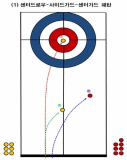

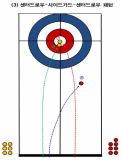
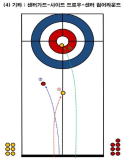

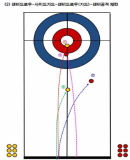
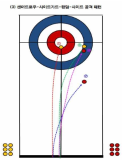
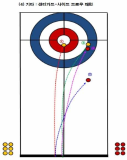
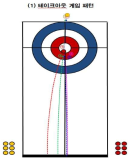
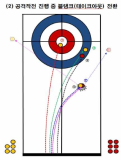

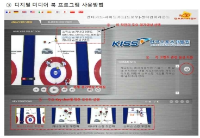


This study has been conducted to develop methods and techniques for the analysis of data related to baseball performance using the winning and losing games. The purposes of the study were to examine differences of athlete performance for semi playoff, playoff, and Korean professional baseball series and to develop optimal forecasting model for the short term series. Data used in the study were taken from Korean professional baseball association. Three data sets including semi play off from 1982 to 2012, play off from 1989 to 2012, and Korean series from 1982 to 2012 were used. To compare athlete performance by winning and losing games for short-term series t-test was applied. This study created new parameters by weighted value through the equalization process to calculate skill related variables as a predicted variable. Three predicted models such as discriminant, binary logistic regression and artificial neural network models were developed to clarify the suggested models. The results showed that the number of significant parameters increased as the series continued. In particular, a variable related to error was added as a significant variable at the Korean Series. A third base hit in the play-off and a second base hit were also added as significant parameters in the play-off and the Korean series, respectively. In addition, W/L a major variables affecting a given technology area, the pitching PO, PO, the inertia, KS, the pitching, respectively. An artificial neural network model was finally selected with the highest accuracy and lowest input of estimated parameters in the semi play-off. In the play-off, artificial neural network model that applied technical area parameters by specialist criteria had better accuracy rate than two others. In the Korean series, artificial neural network model that created estimation parameters by applying all parameters was chosen as the final model. When the overall accuracy level of semi-play off, play off and Korean series was figured out, binary logistic regression model had higher accuracy of classification than discriminant model, but artificial neural network model had the higher accuracy of classification than binary logistic regression model.



This study classified and analyzed groups of spectators of professional baseball through market segmentation and predicted the sports consumer behavior by using artificial neural networks model and logistic regression model. The results of hierarchical cluster analysis, K-means cluster analysis, cross-tabulation analysis and one-way ANOVA using PASW 18.0 and AMOS 18.0 suggest five clusters of consumer segments and by using Modeler 14.1, artificial neural networks model was made to predict the data. By using artificial neural networks model and logistic regression model, hit ratio was grasped about the spectator satisfaction and future consumption behavior. The results are as follow: The hit ratio were high in ‘cluster 5’ for artificial neural networks model(spectator satisfaction: 71.3%, future consumption behavior: 99.3%) and logistic regression(spectator satisfaction: 71.8%, future consumption behavior: 96.5%). Furthermore, cross-tabulation and one-way ANOVA was performed to understand the cluster's characteristic which had highest hit ratio about the spectator satisfaction and future consumption behavior. And through this marketing strategy was suggested.


Purpose This study was to examine the effect of athletes’ personality on coach-athlete maintenance of relationship. Methods For this purpose, the data was collected by 284 athletes using personality five factor questionnaire and Coach-Athlete Relationship Maintenance Questionnaire(CARM-Q). correlation and multiple regression analysis were conducted to verify the relationship between five personality factors and maintaining coach-athlete relationship. Results The results were as follows: Personality had a significant effect on the maintenance of coach-athlete’s relationship. Firstly, the artificial neural network was analyzed to find the influence of personality that determine positive relationships with coaches. Conclusion As a result, it was confirmed that the favor was the main discriminant factor in maintaining the relationship of coach-athlete. Finally, openness and sincerity were found to maintain and develop the positive relationship with coaches.

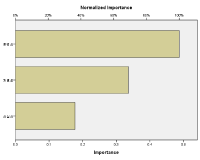

This study examined whether or not regulatory focus can predict motivation level. 141 Ssireum player completed Korean self-regulatory focus of Hong(2005)assessing their self-regulatory focus, and Behavioral Regulation in Sport Questionnaire(BRSQ) of Lonsdale, Hodge & Rose(2008) accessing motivation level based on self-determination theory. Artificial neural network analysis was utilized to find motivation factors that determine the regulatory focus, and the option was multi-layer perception. The result represented promotion focus predicted intrinsic motivation. Also, the prevention focus predicted extrinsic motivation. This result provided that self-regulatory focus can predict player’s motivation level and promotion focus related to intrinsic motivation.

